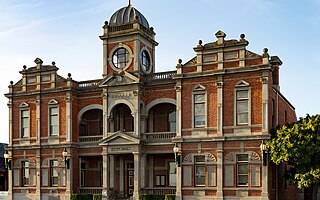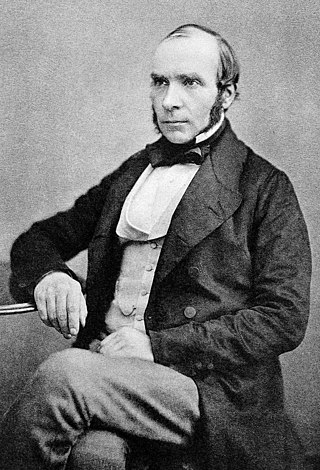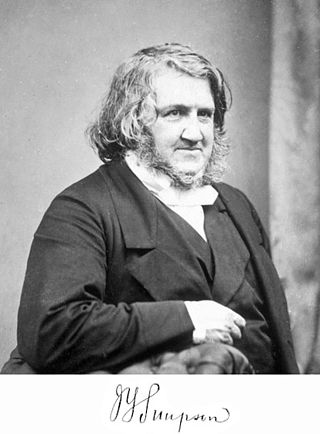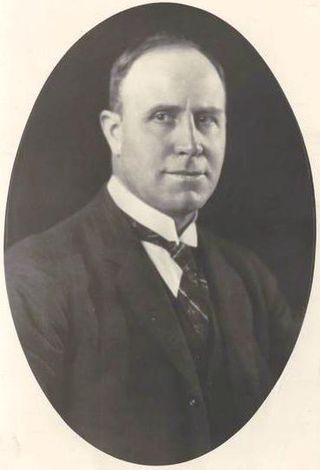Related Research Articles
General anaesthetics are often defined as compounds that induce a loss of consciousness in humans or loss of righting reflex in animals. Clinical definitions are also extended to include an induced coma that causes lack of awareness to painful stimuli, sufficient to facilitate surgical applications in clinical and veterinary practice. General anaesthetics do not act as analgesics and should also not be confused with sedatives. General anaesthetics are a structurally diverse group of compounds whose mechanisms encompass multiple biological targets involved in the control of neuronal pathways. The precise workings are the subject of some debate and ongoing research.
Chloroform, or trichloromethane, is an organic compound with the formula CHCl3 and a common solvent. It is a very volatile, colorless, strong-smelling, dense liquid produced on a large scale as a precursor to refrigerants and in turn PTFE. Chloroform is a trihalomethane that serves as a powerful anesthetic, euphoriant, anxiolytic, and sedative when inhaled or ingested. Chloroform was used as an anesthetic between the 19th century and the first half of the 20th century. It is miscible with many solvents but it is only very slightly soluble in water.

General anaesthesia (UK) or general anesthesia (US) is a method of medically inducing loss of consciousness that renders a patient unarousable even with painful stimuli. This effect is achieved by administering either intravenous or inhalational general anaesthetic medications, which often act in combination with an analgesic and neuromuscular blocking agent. Spontaneous ventilation is often inadequate during the procedure and intervention is often necessary to protect the airway. General anaesthesia is generally performed in an operating theater to allow surgical procedures that would otherwise be intolerably painful for a patient, or in an intensive care unit or emergency department to facilitate endotracheal intubation and mechanical ventilation in critically ill patients.

Castlemaine is a town in Victoria, Australia, in the Goldfields region about 120 kilometres northwest by road from Melbourne and about 40 kilometres from the major provincial centre of Bendigo. It is the administrative and economic centre of the Shire of Mount Alexander. The population at the 2021 Census was 7,506. Castlemaine was named by the chief goldfield commissioner, Captain W. Wright, in honour of his Irish uncle, Viscount Castlemaine.

John Snow was an English physician and a leader in the development of anaesthesia and medical hygiene. He is considered one of the founders of modern epidemiology, in part because of his work in tracing the source of a cholera outbreak in London's Soho, which he identified as a particular public water pump. Snow's findings inspired fundamental changes in the water and waste systems of London, which led to similar changes in other cities, and a significant improvement in general public health around the world.

An inhalational anesthetic is a chemical compound possessing general anesthetic properties that is delivered via inhalation. They are administered through a face mask, laryngeal mask airway or tracheal tube connected to an anesthetic vaporiser and an anesthetic delivery system. Agents of significant contemporary clinical interest include volatile anesthetic agents such as isoflurane, sevoflurane and desflurane, as well as certain anesthetic gases such as nitrous oxide and xenon.

Sir James Young Simpson, 1st Baronet,, was a Scottish obstetrician and a significant figure in the history of medicine. He was the first physician to demonstrate the anaesthetic properties of chloroform on humans and helped to popularise its use in medicine.

Sir Benjamin Ward Richardson was a British physician, anaesthetist, physiologist, sanitarian, and a prolific writer on medical history. He was the recipient of the Fothergill gold medal, awarded by the Medical Society of London in 1854 and of the Astley Cooper triennial prize for an essay in physiology.
Charles Walter Suckling was a British chemist who first synthesised halothane, a volatile inhalational anaesthetic in 1951, while working at the Imperial Chemical Industries (ICI) Central Laboratory in Widnes.

Sir Harry Sutherland Wightman Lawson KCMG, was an Australian politician who served as Premier of Victoria from 1918 to 1924. He later entered federal politics, serving as a Senator for Victoria from 1929 to 1935, and was briefly a minister in the Lyons government. He was a member of the Nationalist Party until 1931, when it was subsumed into the United Australia Party.

Butler Cole Aspinall was a British-born journalist, barrister who migrated with his young wife to Melbourne, Australia, at first as an editor and writer for The Argus. He soon took up his lucrative legal practice as a defence advocate and later as a politician in the state of Victoria.
Henry George Smith was an Australian chemist whose pioneering work on the chemistry of the essential oils of the Australian flora achieved worldwide recognition.
Curt Theodor Schimmelbusch was a German physician and pathologist who invented the Schimmelbusch mask, for the safe delivery of anaesthetics to surgical patients. He was also a key figure in the development of mechanical methods of sterilisation and disinfection for surgical procedures, on which his Anleitung zur aseptischen Wundbehandlung was considered a seminal work.

Joseph Thomas Clover was an English doctor and innovator of anaesthesia. He invented a variety of pieces of apparatus to deliver anaesthetics, including ether and chloroform, safely and controllably. By 1871 he had administered anaesthetics 13,000 times without a fatality.

Sir Robert Reynolds Macintosh was a New Zealand-born British anaesthetist. He was the first professor of anaesthetics outside the United States.

Throughout recorded history, attempts at producing a state of general anesthesia can be traced back to the writings of ancient Sumerians, Babylonians, Assyrians, Egyptians, Indians, and Chinese. Despite significant advances in anatomy and surgical technique during the Renaissance, surgery remained a last-resort treatment largely due to the pain associated with it. However, scientific discoveries in the late 18th and early 19th centuries paved the way for the development of modern anesthetic techniques.
Geoffrey Kaye (1903–1986) was an Australian anaesthetist.
John Henry Tait was an Australian film and theatre entrepreneur who often worked with his brothers Charles, Nevin, Edward and Frank.
Edward Langton was an Australian businessman and politician, Treasurer of Victoria in 1868 and 1872–1874.

Sir Thomas Peel Dunhill was an Australian thyroid surgeon and honorary surgeon to the monarchs of the United Kingdom.
References
- Serle, Percival (1949). "Embley, Edward Henry". Dictionary of Australian Biography . Sydney: Angus & Robertson . Retrieved 12 October 2008.
- Geoffrey Kaye, 'Embley, Edward Henry (1861 - 1924)', Australian Dictionary of Biography , Volume 8, MUP, 1981, pp 436–437. Retrieved on 12 October 2008